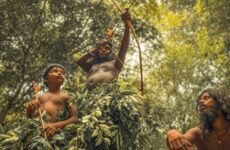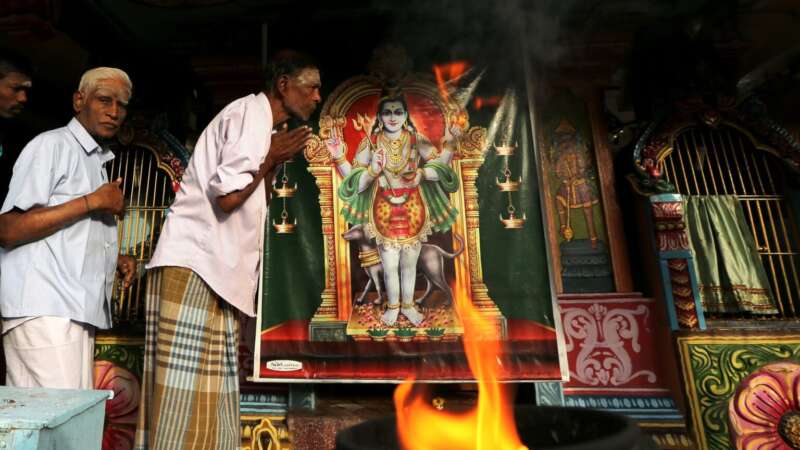
Appealing Northern Province of Sri Lanka
Geography of Northern Province
Northern Province is one of nine provinces of Sri Lanka and there are five districts in Northern Province, namely Jaffna, Vavuniya, Kilinochchi. Mannar & Mulative. Jaffna is the capital of the Northern Province & Jaffna district. The total population of the Northern Province records as 1.059 million according to the 2012 census.
Northern Province of Sri Lanka is located just 35km (22miles) from India. The province is surrounded by the ‘Gulf Mannar’ and ‘Palk Strait’ to the West side, Palk Strait to the North West side, the famous Bay ‘Bay of Bengal’ to the north and east. The Province has large number of Lagoons such as Jaffna Lagoon, Nanthi Kadal, Chundikulam Lagoon etc. Geographically, Northern Province is belong to dry zone as well as some parts are belong to arid zone (Mannar). Area is mostly dry but receives rains from North East Monsoon which occurs during months of November to March.
Culture & Tradition
Northern Part was repeatedly settled and invaded by Tamil migrants from southern India in history. As a result of it, it has a unique character and culture, one which owes as much to Hinduism. The best place to witness the Hindu culture and traditions. Northern Province has Tamil population of 94% are Sri Lankan Tamils according to the statistics of 2012 census. You will see hundreds of colorful Hindu Shrines & temples when we are reaching to the Northern border. Apart from Hindus, there are Muslims, Christians and minority of Buddhist live in harmony.Suburb of Jaffna, ‘ Nallur’ served as the capital for four centuries long medieval Jaffna kingdom.
During the thirty years of civil war, the ruthless terrorist group called “LTTE (Liberation tigers of Tamil Eelam) occupied mainly in the North part and the whole area was defragmented along with no any development. Entire population was effected by the terrorist activities of Tamil Tigers. Prior to the civil war, Jaffna was the second most populated city after Colombo. But due to the Tamil Tigers insurgency, the city became depopulated. They claimed whole northern part and a part of Eastern for a separate state. It was a war zone during the war and thousands of residents left the area. Some moved to India while some moved to eastern and to the south. After the civil war which was ended in 2009, now this area has developed a lot and has become one of top tourist destinations in the country.
Economy
The majority of the population are mainly engaging with farming, fishing and also other civil economical professions such as service sector.
There are several attractions you can visit during an overnight trip to Jaffna, the Northern part of Island.
Tourist Attractions in Northern Province
Mannar Fort
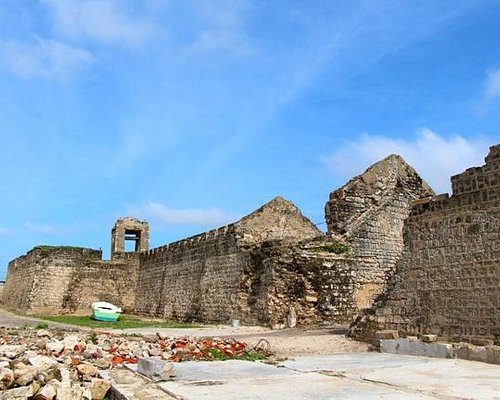
Mannar Fort is located at the Southern part of the Mannar Island, outside of Mannar town. Originally built by Portuguese in 1560 and later Dutch captured the Fort in 1658 and rebuilt the fort in 1696. In 1795, Dutch surrendered the Fort to British and the fort was subsequently occupied by British Army. This fort has four bastions and still they are in good condition. But inside the fort is not taken care of very well unfortunately. Walls of Bastions reaches a height of around 3.5 meters with a 1.5meters thick wall. Ramparts are 14.5 in length. Currently Mannar Fort is under the Department of Archeology of Sri Lanka.
Baobab Tree, Mannar
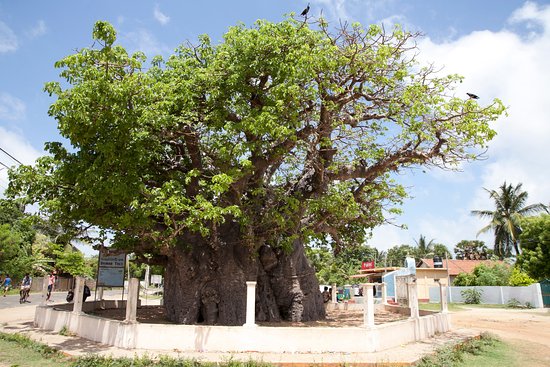
The Oldest & the largest Baobab tree in Sri Lanka which is 700 years old and the tree measure more than 60 feet around. According to the history, An Arab Merchant brought with him a herd of camels and supply of Baobab fruit as food in the shore of Mannar. A seed from this fruit fell on the ground. People believe this is the tree which sprouted from that tree.
Doric Bungalow, Mannar

Located 40 Kilometers South of Mannar Island. This is called The Doric at Arippu. Ancient Greek Doric style Manson which was designed by the British Governor Frederik North and constructed in 1804. The main purpose of the construction was to revive and supervise the pearl fisheries. The building was two storied and known as “Doric” due to the presence of its brick Columns which is a Greek architectural structure. You can see the remains of four small bedrooms in the ground floor today. There were two rooms on the upper floor. Today this building is declared as a protected archeological monument.
Kilinochchi War memorial
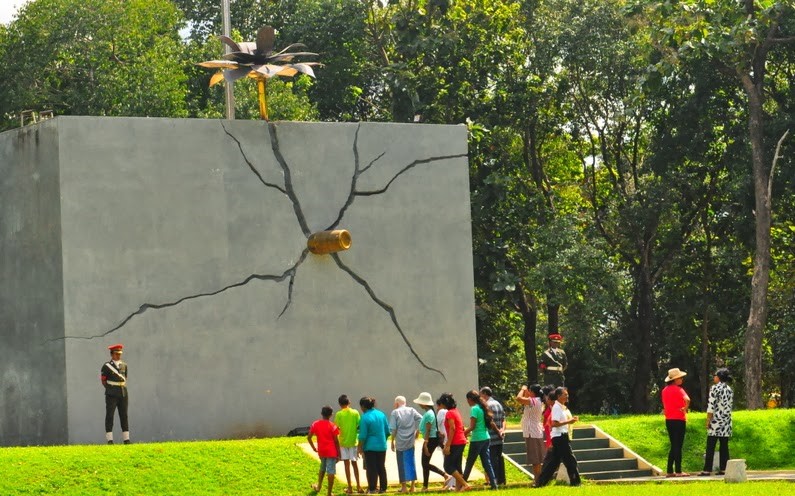
Kilinochchi war memorial is a large monument located in the Northern Province of the Country.The war memorial which was established in 2009 by Sri Lankan army for the soldiers who sacrificed their lives during the civil war.
Jaffna Fort

Situated close to the coastal town- Gurunagar in Jaffna. Originally built by Portuguese between 1618 & 1625. During the Portuguese period, the Fort was called “Fortress of our Lady Miracles of Jafanapatao”. Dutch took over the Fort in 1658 and Dutch expanded it. This was the loss of Portuguese last stronghold in Sri Lanka. British occupied the Fort from 1795 till 1948 and the fort served as a British garrison. This is a 400 years old fort is a reminder of Sri Lanka’s colonial past and the architecture as well as the maritime. This massive fort is over looking the Jaffna Lagoon. This fort is considered as one of well preserved & greatest forts in Asia. Jaffna Fort is settled within the borders of a pentagon which is surrounded by a moat. The walls of the fort was made out of mortar, bricks, corals and stones. The fort spreads over 25 hectares of land and only second to Galle Dutch fort as the biggest Dutch Fort in Sri Lanka. Unfortunately much of its history was destroyed during the Civil war. But still the fort stands proudly and shows its greatness. Jaffna fort has become one of major tourist attractions in Norther portion of the country.
Nagadeepa Buddhist Temple, Jaffna
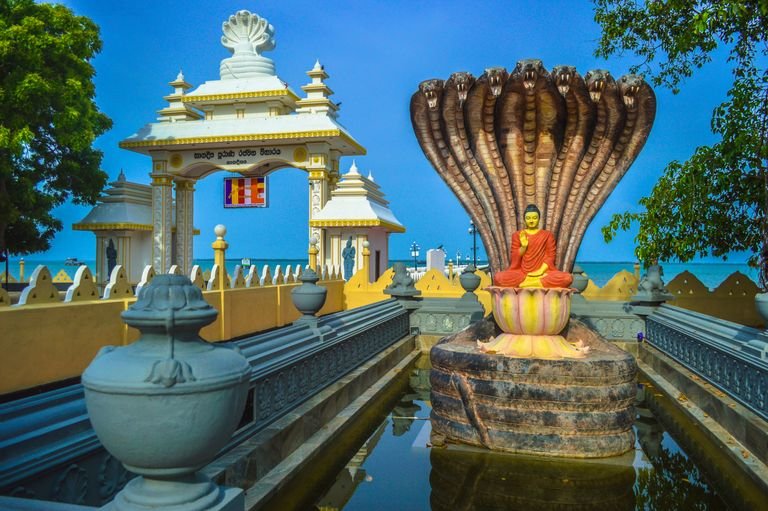
Nagadeepe Buddhist Temple is the most sacred Buddhist temple in Jaffna peninsula and one of the country’s sixteen holiest Buddhist shrines. According to the history, Buddha visited the site after five years of attaining Enlightenment to settle the dispute between two warring Naga kings, Chulodara and Mahodara. Naga was one of a clans who occupied in Sri Lanka along with Yaksha, Raksha and Deva clans over 2500 years ago. This scenic Buddhist temple is situated on “Nainativu” which is a small island in Gulf of Mannar and is only 35 miles to India. According to the great Chronicle of Sri Lanka “Mahawamsa” describes that a gem studded throne and a stone with Buddha’s footprints have been enshrined to the Stupa in Nagadeepa. Chronicle further explains that pilgrims from India used to come and worship the temple. Today we can see not the ancient old temple but a new temple which was built in 1950s. But still this temple is considered as one of sacred places in Sri Lanka among Buddhists. The route to the temple is unique than other places you will see in Sri Lanka. The road from Jaffna runs across the causeway to Kayts Island and from Kaytes Island is another causeway to Punkudutiv. The landscape is very much flat and sandy. You will see long stretched palm trees along the road. From the second Island, travelers have to take a boat/ferry Nainativu where there are two jetties, One is at a Hindu temple and another one at Nagadeepa Temple.
Nallur Kandaswamy Hindu Temple
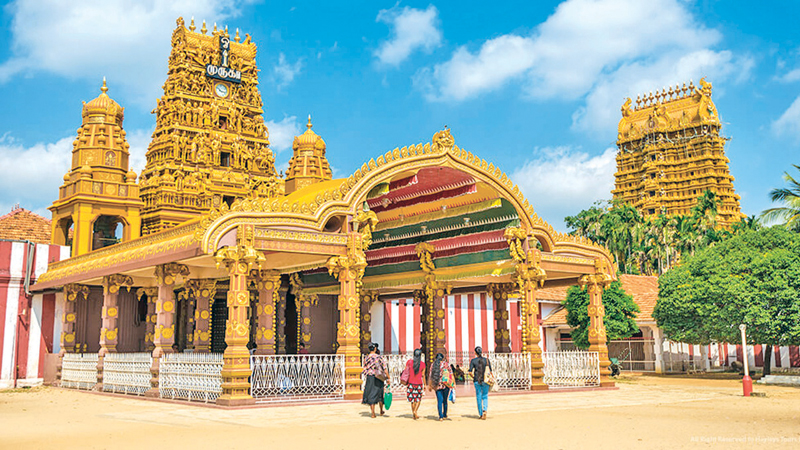
This Colorful Hindu shrine is located 3km from Jaffna city. One of prominent Hindu shrine in the country & build by the Sinhala King Parakramabahu VI from Kotte Kingdom to please Hindus of Jaffna after defeating Vijayanagar invasion. Constructed in 948 AD which is over thousand years old. It was developed during 13th Century Ad by Buwaneka Bahu in Kotte period. This temple is dedicated to “God Murugan” -the god of war, love and beauty according to Hindusim. The golden color pillars shine beautifully and stands tall at the entrance of the building. When you walk through the arch, you will reach to a spacious hall with a high ceiling. You will see the prominent statue of God Murugan in the center and other major deities are surrounded the main statue. Every year (Mostly in month of August) the Nallur Kandaswami Kovil holds a festival which starts off with a flag hoisting ceremony and the festival lasts for 25 days. During this festive time, you can see devotees having their body pierced with hooks, exhibiting no pain in response as an act of faith that is a fundamental part of their religion beliefs.
Ruins of King Sangiliyan’s Minister's House
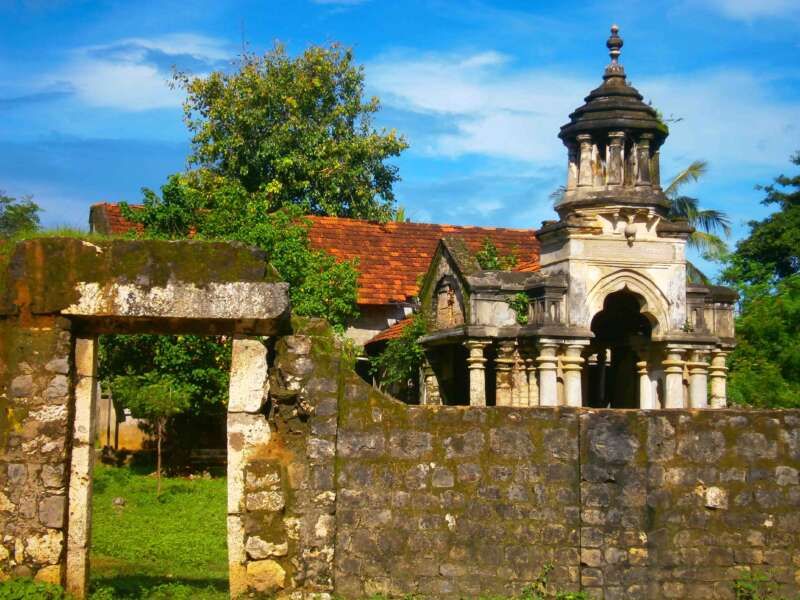
This magnificent building is located in town called “Nallur” which 3.5km from Jaffna city. Originally Nallur was known as “Singainagar” and it was the capital of ancient Jaffna Kingdom. This was the official residence of the Minister of king Sangiliyan, “Cankill”. This is located in Nallur along the Jaffna Point Pedro road. This is one of ancient buildings in Nallur. Some archeologists say this was built by the Dutch because of its architecture.
The Statue of King Sangilyan

The statue of the Tamil King CankillI II who was the last king of Jaffna Kingdom. The original statue was built in 1974. It was removed in 2011 and a new statue has been erected at the same place.
Library Building of Jaffna

Built in 1933 with a classic architecture. The building was burnt down in 1981 during a rampage when it was holding nearly 100,000 books & manuscripts making it one of the largest libraries in whole Asia. Library was fully renovated in 1984 but during the civil war, it was damaged several times. It was opened to public in 2003
Point Pedro
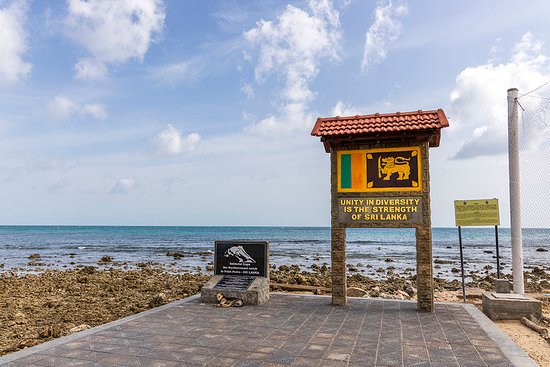
This is Northern Tip or the northernmost point of Sri Lanka. Point Pedro was a trading port during Pre Colonial Era and in Colonial times. The Ancient archeological site “Vallipuram” is close to Point Pedro as well as you can see a light house and the hill of St Lourdes church. The Boxing Day tsunami of 2004 raised the salt content of the ground water. The tsunami destroyed parts of the town and submerged some parts with seawater up to 4 feet deep.
Delft Island (Neduntheevu), Jaffna
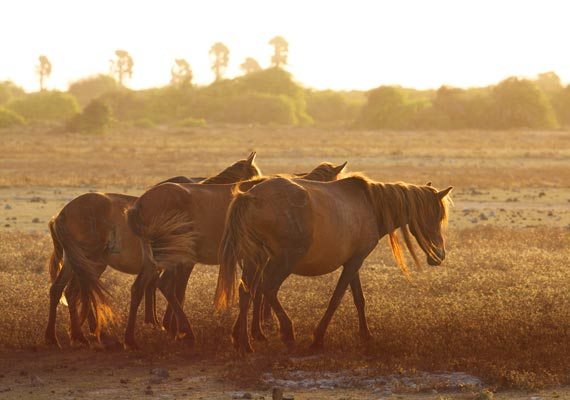
Locally known as “Neduntheevu” and during the Dutch period, they changed the name as “Delft Island”. This island is famous for wild horses that roams its coastal area. The total area of the island is 50 sqkm and the length is 8km & the width is 6km. This is a flat island which is surrounded by shallow waters, corals & sands. Delft can be reached via daily ferry that leaves from Kurikkaduwan Jetty (From 9.00am to 2.30pm)
Kadurugoda Temple & Ruins
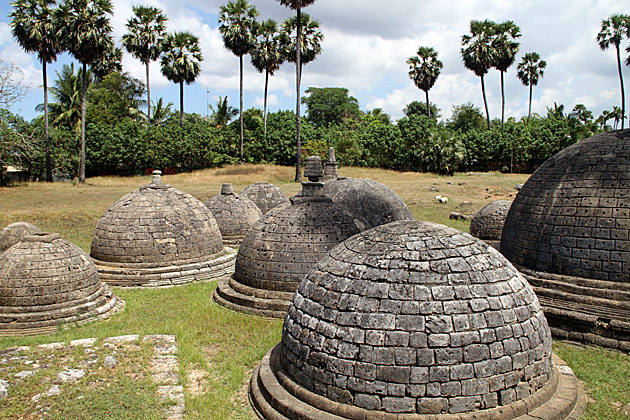
This is one of an ancient site in Jaffna peninsula. According to Mahawamsa, the history of this places goes back to 3rd C.BC, King Devanampiyatissa reign. Buddhist Non Sangamitta had visited a Temple which was located at this location when she was carrying the sapling of Bo Tree from India to Anuradhapura. Paul E. Peiris, the Jaffna Magistrate at 1917, documented nearly 60 gray coral stone stupas when he discovered the ruins at the turn of the 20th century. Today however, only about 20 stupas remain sprawled across less than an acre of open land under Palmyra trees.
Traumland Tours
Traumland Tours wins The Travel & Hospitality Awards for 2021!
November 5, 2021 NextLet’s play Golf in Sri Lanka
November 5, 2021Related Posts

Sri Lanka makes it to the top 10 most instagrammable places in the world in 2023
June 27, 2023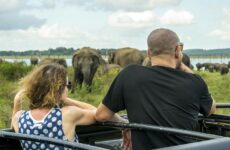
Witness the Spectacle: Majestic Minneriya National Park’s Wild Elephant Gathering
June 24, 2023